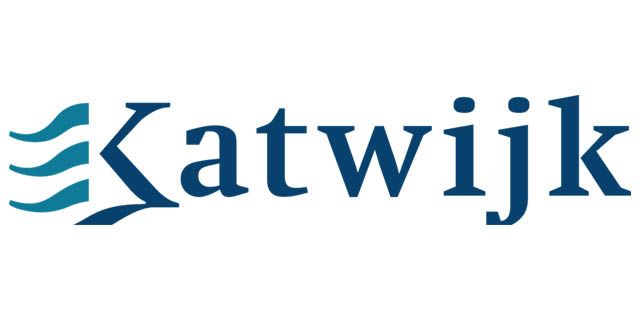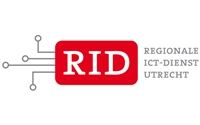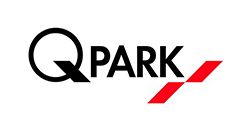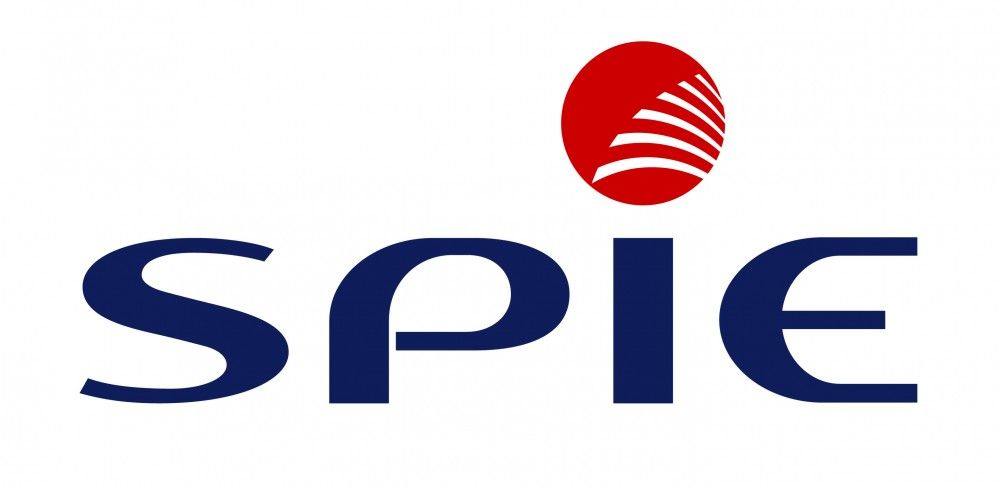Cursusbeschrijving
Deze cursus is het tweede deel van een serie van drie cursussen waarin de benodigde kennis en vaardigheden worden opgedaan voor de implementatie van een Windows Server 2012-kerninfrastructuur in een bestaande bedrijfsomgeving. De drie cursussen behandelen gezamenlijk het implementeren, beheren, onderhouden en ‘bevoorraden’ van de services en de infrastructuur binnen een Windows Server 2012-omgeving. Hoewel er qua vaardigheden en taken tussen de cursussen enige overlap is, gaat deze cursus vooral in op de beheerstaken die nodig zijn voor het onderhouden van een Windows Server 2012-omgeving, zoals gebruikers- en groepsbeheer, netwerktoegang en databeveiliging.
Deze training is gebaseerd op Windows Server 2012 R2. Ook het examen 70-411, dat gerelateerd is aan deze cursus is gebaseerd op Windows Server 2012
{tab Doelgroep}
Deze cursus is bedoeld voor IT-professionals die praktijkervaring hebben met een Windows Server 2008- of Windows Server 2012-omgeving en die de benodigde kennis en vaardigheden willen opdoen voor het beheren en onderhouden van de belangrijkste infrastructurele diensten die nodig zijn binnen een Windows Server 2012-omgeving. Deze cursus is vooral gericht op uitbreiding van de basisomgeving met Windows Server 2012-diensten en -infrastructuur en op het opdoen van de benodigde vaardigheden voor het beheren en onderhouden van een Windows Server 2012-omgeving binnen een domein, zoals het beheer van gebruikers en groepen, toegang tot het netwerk en de beveiliging van data.
{tab Voorkennis}
Knowledge and skills concerning the initial implementation and configuration of core Windows Server services including Active Directory Domain Services (AD DS), Networking Services and Microsoft Hyper-V.
Candidates must have knowledge equivalent to that covered in 20410D Installing and Configuring Windows Server 2012.
{tab Certificering}
This course prepares for exam 70-411 which is the second of the three exams needed for MCSA Windows Server 2012. {tab Vervolgcursussen} 20412 Configuring Advanced Windows Server 2012 Services/.
{tab Overige informatie}
This course will be delivered with digital courseware. In order to have the best learning experience you are asked to bring your own second screen to view the courseware. A second screen includes: tablets and laptops.
{tab Open rooster} {slider Amsterdam}
Op onze locatie in Amsterdam verzorgen wij regelmatig MS 20411C Windows Server training. Via onderstaande button kunt u zien welke data beschikbaar zijn:
{slider Eindhoven}
Op onze locatie in Eindhoven verzorgen wij regelmatig MS 20411C Windows Server training. Via onderstaande button kunt u zien welke data beschikbaar zijn:
{slider Nieuwegein}
Op onze locatie in Utrecht verzorgen wij regelmatig MS 20411C Windows Server training. Via onderstaande button kunt u zien welke data beschikbaar zijn:
{slider Rotterdam}
Op onze locatie in Rotterdam verzorgen wij regelmatig MS 20411C Windows Server training. Via onderstaande button kunt u zien welke data beschikbaar zijn:
{slider Zoetermeer}
Op onze locatie in Rotterdam verzorgen wij regelmatig MS 20411C Windows Server training. Via onderstaande button kunt u zien welke data beschikbaar zijn:
{/sliders} {/tabs} {slider Cursusinhoud|closed}
Module 1: Configuring and Troubleshooting Domain Name System
This module explains how to configure and troubleshoot DNS, including DNS replication and caching.
- Configuring the DNS Server Role
- Configuring DNS Zones
- Configuring DNS Zone Transfers
- Managing and Troubleshooting DNS
Lab : Configuring and Troubleshooting DNS
- Configuring DNS Resource Records
- Configuring DNS Conditional Forwarding
- Installing and Configuring DNS Zones
- Troubleshooting DNS
After completing this module, students will be able to:
- Manage and troubleshoot DNS.
- Configure DNS zone transfers.
- Create and configure DNS zones.
- Install and configure the DNS server role.
Module 2: Maintaining Active Directory Domain Services and manage the AD DS Database.
This module explains how to implement virtualized domain controllers and read-only domain controller (RODCs). It also explains how to perform common AD DS administrative tasks
- Overview of AD DS
- Implementing Virtualized Domain Controllers
- Implementing RODCs
- Administering AD DS
- Managing the AD DS Database
Lab : Maintaining AD DS
- Installing and Configuring a RODC
- Configuring AD DS Snapshots
- Configuring the Active Directory Recycle Bin
- Cloning a domain controller
After completing this module, students will be able to:
- Explain the general structure of AD DS.
- Implement virtualized domain controllers.
- Implement RODCs.
- Administer AD DS.
- Manage the AD DS database
Module 3: Managing User and Service Accounts
This module explains how to create, configure and automate the creation of user accounts. It also explains how to configure account-related properties of user objects. It further explains how to create and administer Managed Service Accounts.
- Configuring Password Policy and User Account Lockout Settings
- Configuring Managed Service Accounts
Lab : Managing User and Service Accounts
- Configuring Password Policy and Account Lockout Settings
- Creating and Associating a Managed Service Account
After completing this module, students will be able to:
- Configure password policy and user account lockout settings.
- Configure managed service accounts.
Module 4: Implementing a Group Policy Infrastructure
This module explains how to implement a GPO infrastructure. This also teaches how to perform common GPO management tasks, and manage GPOs by using Windows PowerShell. It also focuses on troubleshooting the application of GPOs.
- Introducing Group Policy
- Implementing and Administering GPOs
- Group Policy Scope and Group Policy Processing
- Troubleshooting the Application of GPOs
Lab : Implementing a Group Policy Infrastructure
- Creating and Configuring Group Policy Objects
- Managing GPO Scope
- Verify GPO Application
- Managing GPOs
After completing this module, students will be able to:
- Locate the event logs that contain Group Policy-related events and troubleshoot the Group Policy application
- Describe how GPOs are processed.
- Scope GPOs by using links, security groups, Microsoft Windows Management Instrumentation (WMI) filters, loopback processing, and preference targeting.
- Configure and understand a variety of policy setting types.
- Describe the components and technologies that comprise the Group Policy framework.
Module 5: Managing User Desktops with Group Policy
This module explains how you can use Group Policy Objects (GPOs) to implement desktop environments across your organization by using Administrative Templates, Folder Redirection, Group Policy preferences, and where applicable, use software deployment to install and update application programs. It is important to know how to use these various GPO features so that you can configure your users’ computer settings properly.
- Implementing Administrative Templates
- Configuring Folder Redirection and Scripts
- Configuring Group Policy Preferences
- Managing Software with Group Policy
Lab : Managing User Desktops with Group Policy
- Implement Settings by Using Group Policy Preferences
- Managing Office 2013 by using Administrative Templates
- Deploying Software by using Group Policy
- Configuring Folder Redirection
After completing this module, students will be able to:
- Describe and implement Administrative Templates
- Configure folder redirection and scripts by using GPOs
- Configure GPO preferences
- Deploy software by using GPOs
Module 6: Implementing Remote Access
In this module, you will learn how to implement and manage remote access in Windows Server 2012. You will also learn how to implement DirectAccess by using the Getting Started wizard, implement and manage an advanced DirectAccess infrastructure, and implement VPN.
- Overview of Remote Access
- Implementing DirectAccess by Using the Getting Started Wizard
- Implementing and Managing an Advanced DirectAccess Infrastructure
- Implementing VPN
- Implementing Web Application Proxy
Lab : Implementing DirectAccess by Using the Getting Started Wizard
- Verifying Readiness for a DirectAccess Deployment
- Configuring DirectAccess
- Validating the DirectAccess Deployment
Lab : Deploying an Advanced DirectAccess Solution
- Preparing the Environment for DirectAccess
- Implementing the Advanced DirectAccess Infrastructure
- Validating the DirectAccess Deployment
Lab : Implementing VPN
- Implementing VPN
- Validating the VPN Deployment
Lab : Implementing Web Application Proxy
- Implementing Web Application Proxy
- Validating the Web Application Proxy Deployment
After completing this module, students will be able to:
- Install and manage the Remote Access role in Windows Server 2012
- Implement DirectAccess by using the Getting Started Wizard
- Implement and manage an advanced DirectAccess Infrastructure
- Implement VPN access
- Implement Web Application Proxy
Module 7: Installing, Configuring, and Troubleshooting the Network Policy Server Rolemonitor and troubleshoot NPS.
This module explains how to install and configure NPS, RADIUS Clients and servers. It also describes NPS authentication methods. It describe NPS authentication methods and how to
- Installing and Configuring a Network Policy Server
- Configuring RADIUS Clients and Servers
- NPS Authentication Methods
- Monitoring and Troubleshooting a Network Policy Server
Lab : Installing and Configuring a Network Policy Server
- Installing and Configuring NPS to Support RADIUS
- Configuring and Testing a RADIUS Client
- Monitor and troubleshoot NPS
After completing this module, students will be able to:
- Install and configure NPS
- Configure both RADIUS clients and servers
- Describe NPS authentication methods
Module 8: Implementing Network Access Protection
This module explains how to configure, monitor, and troubleshoot NAP. It also explains how NAP can help to protect your network and the various NAP enforcement processes.
- Overview of Network Access Protection
- Overview of NAP Enforcement Processes
- Configuring NAP
- Configuring IPSec Enforcement for NAP
- Monitoring and Troubleshooting NAP
Lab : Implementing Network Access Protection
- Configuring NAP Components
- Configuring Virtual Private Network Access
- Configuring the Client Settings to Support NAP
- Monitor and troubleshoot NAP
After completing this module, students will be able to:
- Describe how NAP can help to protect your network
- Describe the various NAP enforcement processes
- Configure NAP
Module 9: Optimizing File Services
This module describes FSRM, configure quotas, file screening, and storage reports and implement classification management and file management tasks. It describes the components of the DFS. I also explains how to configure DFS namespaces and DFS replication.
- Overview of FSRM
- Using FSRM to Manage Quotas, File Screens, and Storage Reports
- Implementing Classification and File Management Tasks
- Overview of DFS
- Configuring DFS Namespaces
- Configuring and Troubleshooting DFS Replication
Lab : Configuring Quotas and File Screening Using File Server Resource Manager
- Configuring File Server Resource Manager Quotas
- Configuring File Screening and Storage Reports
Lab : Implementing Distributed File System
- Installing the DFS role service
- Configuring a DFS Namespace
- Configuring DFS Replication
After completing this module, students will be able to:
- Describe FSRM.
- Use FSRM to manage quotas, file screens, and storage reports.
- Implement classification and file management tasks.
- Describe DFS.
- Configure DFS namespaces.
- Configure and troubleshoot DFS Replication
Module 10: Configuring Encryption and Advanced Auditing
This module explains how to encrypt files using EFS and configure advanced auditing features.
- Encrypting Drives by Using BitLocker
- Encrypting Files by Using EFS
- Configuring Advanced Auditing
Lab : Configuring Encryption and Advanced Auditing
- Encrypting and Recovering Files
- Configuring Advanced Auditing
- Using Windows BitLocker Drive Encryption to Secure Data Drives
After completing this module, students will be able to:
- Configure advanced auditing
- Encrypt files by using Encrypting File System (EFS).
- Encrypt hard drives by using Windows BitLocker Drive Encryption.
Module 11: Deploying and Maintaining Server Images
This module explains how to create and manage server images by using Windows Deployment Services Lessons
- Overview of Windows Deployment Services
- Managing Images
- Implementing Deployment with Windows Deployment Services
- Administering Windows Deployment Services
Lab : Using Windows Deployment Services to Deploy Windows Server 2012
- Installing and Configuring Windows Deployment Services
- Creating Operating System Images with Windows Deployment Services
- Configuring Custom Computer Naming
- Deploying Images with Windows Deployment Services
After completing this module, students will be able to:
- Describe the important features and functionality of Windows Deployment Services.
- Manage images by using Windows Assessment and Deployment Kit (Windows ADK) Tools.
- Configure Windows Deployment Services in Windows Server 2012.
- Perform deployments with Windows Deployment Services.
Module 12: Implementing Update Management
This module explains how to use Windows Server Update Services (WSUS) to deploy updates to Windows servers and clients.
- Overview of WSUS
- Deploying Updates with WSUS
Lab : Implementing Update Management
- Implementing the WSUS Server Role
- Configuring Update Settings
- Approving and Deploying an Update by using WSUS
After completing this module, students will be able to:
- Describe the role of WSUS.
- Describe the WSUS update management process.
- Deploy updates with WSUS.
Module 13: Monitoring Windows Server 2012
This module explains the monitoring tools available in Windows Server 2012. it also explains how to use Performance Monitor and monitor events.
- Monitoring Tools
- Using Performance Monitor
- Monitoring Event Logs
Lab : Monitoring Windows Server 2012
- Establishing a Performance Baseline
- Identifying the Source of a Performance Problem
- Viewing and Configuring Centralized Event Logs
After completing this module, students will be able to:
- Describe the monitoring tools for the Windows Server 2012 operating system.
- Use Performance Monitor to view and analyze performance statistics of programs that are running on their servers.
- Monitor event logs to view and interpret the recorded events.
{slider Doelstellingen}
After completing this course, students will be able to:
- Configure and Troubleshoot Domain Name System
- Maintain Active Directory Domain Services
- Manage User and Service Accounts
- Implement Group Policy Infrastructure
- Manage User Desktops using Group Policy
- Configure and Troubleshoot Remote Access
- Install, Configure and Troubleshoot Network Policy Server
- Implement Network Access Protection
- Optimize File Services
- Configure Encryption and Advanced Auditing
- Deploy and Maintain Server Images
- Implement Update Managements
- Monitor Windows Server 2012
{/sliders}
Groepstraining 20411C?
Heeft u binnen uw organisatie een groep cursisten die graag willen deelnemen aan de tweede MCSA module (20411C) dan is het financieel aantrekkelijk om deze cursus bij u op locatie te organiseren. Vraag een vrijblijvende offerte voor de Administering Windows Server 2012 training.
Meer weten over dit onderwerp?
We verzorgen verschillende verschillende cursussen! Laat hieronder uw gegevens achter en we sturen u vrijblijvend een uitgebreid overzicht toe met alle mogelijkheden.


























